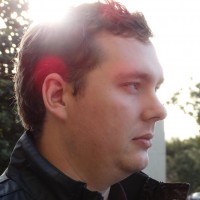Last month our lab helped organise the 2018 Ecoacoustics Congress. We had a great time at the congress, learnt a lot, and met a whole bunch of interesting people! This post will point out some of the resources from the congress that we’re making available.
Michael’s Keynote
Michael Towsey delivered his keynote that asked the question: Has Ecoacoustics come of age?
Michael has kindly published an annotated version of his slides from the congress here.

Zooming Spectrograms
At the congress we demonstrated the new Zooming False-Color Spectrogram interface that is now available on Ecosounds. This interface is an interactive, Google Maps style, visualisation of audio data that allows a user to see the structure and content of their audio data from scales of minutes, zooming out continuously, all the way though to weeks of data. More details on the techniques used in this visualisation will be available in an upcoming publication.

Anthony’s talk on zooming spectrograms
This feature is baked into Ecosounds and anyone hosting their data sets with us will get this visualisation generated automatically. We’ve generated the visualisation for roughly 30% of the data on Ecosounds and over the coming months we expect to finish the generation for the rest of the data.
You can see if your data has the visualisation by clicking on the Explore Audio link on the project or site details pages on Ecosounds.
AnalysisPrograms.exe Workshop
At the congress we ran a workshop that introduced our AnalysisPrograms.exe tool and taught participants how to use it. The practical component covered how to download, set up, and run AnalysisPrograms.exe and also covered generating acoustic indices and False-Color spectrograms. The workshop went well: we got great questions, great feedback, a few bug-reports, and we were very happy with the turnout.

Anthony attempting to convince the workshop that a terminal isn’t really that bad
The practical component of the workshop has been published online; if you missed the congress or you wanted to try the practical again you can find it here:
Using AnalysisPrograms.exe.
If you have any bug reports or feature requests for AnalysisPrograms.exe please see our GitHub repository: https://github.com/QutEcoacoustics/audio-analysis/issues
Phil’s Annotation Talk
Phil Eichinski talked at the conference about the method he used to annotate spectrograms. The key point was that a consistent standard for annotation is important for answering your research question.

Phil wrote a blog post about his talk which is well worth a look.
About the Author
Anthony Truskinger is Research Software Engineer working in the QUT Ecoacoustics Research Group.
Photo credits: Paul Roe, Tshering Dema
This article first appeared on the Ecosounds blog and was republished here with permission.


Add the first post in this thread.